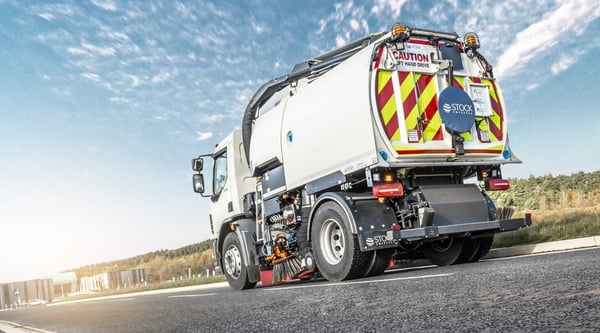This guide provides an overview of the key factors to consider when contemplating using Prema HVO in vessels;
- Prema HVO and the Renewable Transport Fuel Obligation (RTFO)
- Prema HVO’s performance in Diesel engines in vessels – in comparison to Diesel and Marine Gas Oil
Prema HVO and the Renewable Transport Fuel Obligation (RTFO)
HVO is supported for use by the UK government in inland waterway vessels and other recreational craft that do not normally operate at sea - under the Renewable Transport Fuel Obligation (RTFO).
This enables Prema to supply HVO for use in these applications at a reasonable pricing-level over conventional Diesel or Marine Gas Oil.
The background…
The UK government recognises that advanced, environmentally sustainable liquid fuels – such as Prema HVO – are crucial for reducing greenhouse gas emissions in sectors that otherwise would be difficult to decarbonise.
To increase the development, production and use of these fuels, in 2008 the UK established the Renewable Transport Fuel Obligation (RTFO). Fuels covered by the RTFO are supported by government.
This support enables Prema to supply you with Prema HVO for applications covered by the RTFO at a reasonable pricing-level.

The RTFO in plain English…
The Renewable Transport Fuel Obligation is one of the UK’s main policies for reducing greenhouse gas emissions from transport fuel. It was established to deliver on the UK’s responsibilities under the EU Renewable Energy Directive, which aims to ensure 32% of Europe’s energy comes from renewable sources by 2030 (a target which could soon rise to 40% under current proposals).
Essentially, the RTFO obligates UK transport fuel producers to supply a gradually increasing volume of renewable fuel as a proportion of the fuel they produce.
Applications covered by the RTFO include:
- Road vehicles
- Non-road mobile machinery (NRMM)
- Tractors
- Inland waterway vessels and recreational craft that do not normally operate at sea
Essentially, the government’s support under the RTFO enables Prema to supply HVO for use in inland waterway vessels and recreational craft that do not normally operate at sea a reasonable pricing-level over conventional Diesel or Marine Gas Oil.
Visit this article to understand more about how the RTFO works.
Inland waters and how they are categorised
‘Inland waters’ includes any area of water not categorised as ‘sea’ - eg canals, tidal and non-tidal rivers, lakes, and some estuarial waters (an arm of sea that extends inland to meet the mouth of a river).
Inland waters are classified as one of four categories:
- Category A - narrow rivers and canals where the depth of water is generally less than 1.5 metres
- Category B - wider rivers and canals where the depth of water is generally 1.5 metres or more and where the significant wave height could not be expected to exceed 0.6 metres at any time
- Category C - tidal rivers, estuaries and large, deep lakes and lochs where the significant wave height could not be expected to exceed 1.2 metres at any time
- Category D - tidal rivers and estuaries where the significant wave height could not be expected to exceed 2 metres at any time
These categorisations determine the waters not regarded as ‘sea’ for the purposes of most Merchant Shipping legislation, except that, for marine pollution legislation, ‘sea’ normally includes any estuaries or arms of the sea, and therefore tidal Category C, and Category D, waters.
Water categorisation policy and processes are dealt with by MCA.
You can search a map of UK waterways on the MCA website.
Find a list of waterways in the UK and their classifications on the MCA website.
You can also download MSN 1837 (M) on the categorisation of waters (PDF,554.50KB).
Please click on this link to the UK government’s guide to Inland waterways and categorisation of waters.
The role of RTFO in non-inland waterway vessels…
The UK government will support the use of ‘RFNBO’s (Renewable Fuels of Non-Biological Origin), in maritime industries, by making RFNBOs used in ships eligible for support under the RTFO order.
HVO, which is fundamentally derived from bio origin, is not supported for use.
For a full definition of RFNBOs, please see page 33 from the RTFO Guidance Part One Process Guidance 2021 document .
This document ‘A Role of the RTFO in Domestic Marine - Deep Dive Consultation’, March 2021 - provides the government’s reasoning behind this policy.
In conclusion, it states that;
The government is of the view that, whilst biofuels might have a limited near-term role in reducing shipping emissions, given some biofuel options can be deployed in-sector now, available evidence suggests that incentivising their uptake in maritime may result in unintended negative consequences for the overall decarbonisation of the energy system.
Therefore, the Government does not consider that including biofuels for marine transport in scope of the RTFO represents the most effective way to decarbonise shipping in the context of promoting an effective transition to zero emissions by 2050 across the economy. This aligns with the Government strategic approach to supporting the effective deployment of biomass across the energy system and takes into consideration current estimates concerning its future availability.
Whereas;
Synthetic fuels do not have the same supply constraints that biofuels have. Research commissioned by the Government suggests that these fuels including hydrogen, ammonia and methanol might have a strategic role in decarbonising the maritime fuel mix…If produced using eligible processes, synthetic fuels can be classified as renewable fuels of non-biological origin (RFNBOs).
Essentially, the RTFO instrument will not be used to stimulate the uptake of biofuels in shipping but it will be used to encourage the uptake of RFNBOs in shipping.
If you are interested in the use of HVO for use in inland waterways, at sea or the use of RFNBOs in shipping, please do contact Prema to discuss how we can help you.

Prema HVO’s performance in Diesel engines in vessels - in comparison to Diesel and Marine Gas Oil
Essentially, Prema HVO provides a drop-in replacement to conventional EN590 Diesel and Marine Gas Oil in Diesel engines. In turn, Prema HVO provides a method of substantially reducing greenhouse gas emissions by c.90%, without compromise in performance in an environmentally sustainable way in the maritime sector.
However, a more practical and financially sustainable way to deploy HVO for some organisations, would be as a blend component within conventional fossil fuels. Prema Energy are specialist fuel oil blenders and would be delighted to help you with this.
According to marine fuel advisory experts, DNV, HVO is suitable as a ‘drop-in’ fuel to substitute fossil fuels. HVO is compatible with existing infrastructure and engine systems, subject to approval by the manufacturer, but minor modifications may sometimes be required. Please click here to see the full DNV guide for further information.
In the guide below, we compare the specifications of EN15940 Prema HVO with conventional Diesel and Marine Gas Oil then provide an explanation of how this affects performance in application…
How does the Prema HVO specification compare with conventional Diesel?
At a molecular-level, Prema HVO is very similar to EN590 conventional Diesel. In fact, Prema HVO meets the international diesel specification, ASTM D975.
It meets the conventional diesel specification, EN590, in all respects apart from density (it is slightly lighter than conventional diesel). This has minimal effect on fuel consumption because the heating value of the fuels are so similar. Prema HVO exceeds the EN590 conventional Diesel in regards to cold properties, ignition qualities, filterability and stability characteristics.
See below for a comparison of the above specifications and HVO (referred to as ‘Renewable Diesel’).
What does this mean for performance?
Conventional diesel has a slightly higher fuel density than Prema HVO (770-790kg/m3 compared to 820-835kg/m3). You might think this means you would consume much more HVO than Diesel - in a diesel engine in a vessel, but you’d be wrong. The consumption rate of Prema HVO is likely to be similar to conventional diesel. Here’s why.
The science…
It is widely-known that density is a very important factor when it comes to maximum outpit from the engine and when considering volumetric fuel consumption. This is due to the heating value of different conventional fossil diesel fuels being quite contestant per unit of mass.
When density is reduced, the volumetric heating value also decreases as a function of density, meaning more fuel has to be supplied to maintain the same load point. The density of Prema HVO is almost 6% lower than that of conventional Diesel. However, Prema HVO has a relatively high calorific value – that to some extent compensates the difference.
It is the ‘heating value’ of fuel, also known as calorific value, that has the greatest effect on volumetric consumption. Calorific value describes the amount of heat released in an energy source during combustion, expressed in MJ/litre.
The calorific value of Prema HVO and conventional diesel are very similar (34.4MJ/litre compared to 36MJ/litre). ‘Conventional Diesel’, in this article, is the typical EN590 Diesel in the UK – a blend of 6% Biodiesel FAME and 94% fossil Diesel (Governement renewable fuel statistics 2019 final report).
The calorific value of this biodiesel element is lower than Prema HVO by mass, partly because it contains oxygen. As such, the heating value of conventional diesel overall is comparable to HVO, despite the higher density.
The biodiesel component of diesel can also cause operational inefficiencies that lead to greater real-world consumption. It’s therefore not surprising that we have received reports that Prema HVO consumption is actually better than conventional diesel.
Despite the similarity in calorific value, the application of HVO may result in a slightly higher volumetric consumption of about 3%. This potentially may have a limiting effect on the maximum power that can be achieved for the same injector.
Despite that, better combustion efficiency is expected from HVO due to its flat distillation characteristic (only C-15 – C-18 paraffins) and absence of heavy carbon compounds with high final boiling temperatures.
Putting it to the test…
In tests, Heavy Goods Vehicle (HGVs) and passenger cars have shown an average increase in fuel consumption of about 3% with neat Prema HVO compared to 100% fossil diesel (Karavalakis et al., 2015). However, these tests used 100% fossil diesel, not the conventional diesel you’ll find at the pump – which typically contains about 6% biodiesel FAME.
It is worth noting that some studies have actually discovered a slight tendency (0.5%) towards lower energy consumption in MJ/km and better engine efficiency with Prema HVO (Nylund et al., 2011).
How does the Prema HVO specification compare with Marine Gas Oil?
At a molecular-level, Prema HVO is very similar to Marine Gas Oil also. However, there are some differences in their specifications to consider. See a comparison of the Marine Gas Oil specification and HVO below.

In a recent study, Assessment of Hydrotreated Vegetable Oil (HVO) Applicability as an Alternative Marine Fuel Based on Its Performance and Emissions Characteristics (Ushakov and Lefebvre), the combustion and emission characteristics of hydrotreated vegetable oil (HVO) were studied and compared to those of conventional marine gas oil (MGO).
The main goal was to verify its applicability as an alternative marine fuel. Please click here to read the full journal.
Performance differences…
Despite having a relatively high calorific value, the application of HVO resulted in an overall 6% higher volumetric fuel consumption.
This potentially may have a limiting effect on the maximum power that can be achieved for the same injector.
Despite that, better combustion efficiency is expected from HVO due to its flat distillation characteristic (only C-15 – C-18 paraffins) and absence of heavy carbon compounds with high final boiling temperatures.
Emission differences…
- 10-15 % reduction in nitrogen oxides (NOx) emissions
- total unburned hydrocarbons (THC) emissions were reduced by 50-55 %
- 30 % PM mass reduction
All the measured gaseous emissions from HVO showed generally lower values than that from MGO. The obtained results indicate average 10-15 % reduction in nitrogen oxides (NOx) emissions, while total unburned hydrocarbons (THC) emissions were reduced by 50-55 %.
It is believed that a much higher cetane number of HVO together with its superior chemical composition (overall higher H/C ratio, absence of aromatics and heavy-boiling compounds) plays a vital role here. This may also explain the observed around 30 % PM mass reduction, which however showed a strong dependence on load (fuel-air ratio) and speed (time available for combustion) settings.
Measured particle size distributions showed a clearly unimodal nature for both the tested fuels with pronounced accumulation (soot) mode found at around 60-80 nm. The total particle concentration in the measured size range of 14-750 nm was almost 30 % higher for HVO than for MGO. This increase is mainly associated with an increase in the number of produced nanoparticles.
The main reason for that is most likely the less-optimal injection (shorter penetration length with larger cone angle due to lower density and longer injection duration related to lower volumetric energy content of HVO).
The latter negative factors were however counterweighted by the advantages in terms of better chemical composition/structure resulting in an overall better combustion of HVO.
The results clearly show that HVO can be potentially applied as main engine fuel in the maritime sector. HVO is currently being used onboard several ferries operating in Norway – with no reported negative effects.
Have you considered HVO:fossil fuel blends?
For some organisations, a more practical, easy-to-implement and financially sustainable solution would be to deploy Prema HVO as a blend component with conventional fossil fuels.
This would provide immediate significant greenhouse gas emissions savings at a more economical price point. Please see the indicative CO2e reductions that could be achieved with various blends below.

Prema Energy are specialist fuel oil blenders and would be delighted to discuss these with you in further detail.
Take the next step













